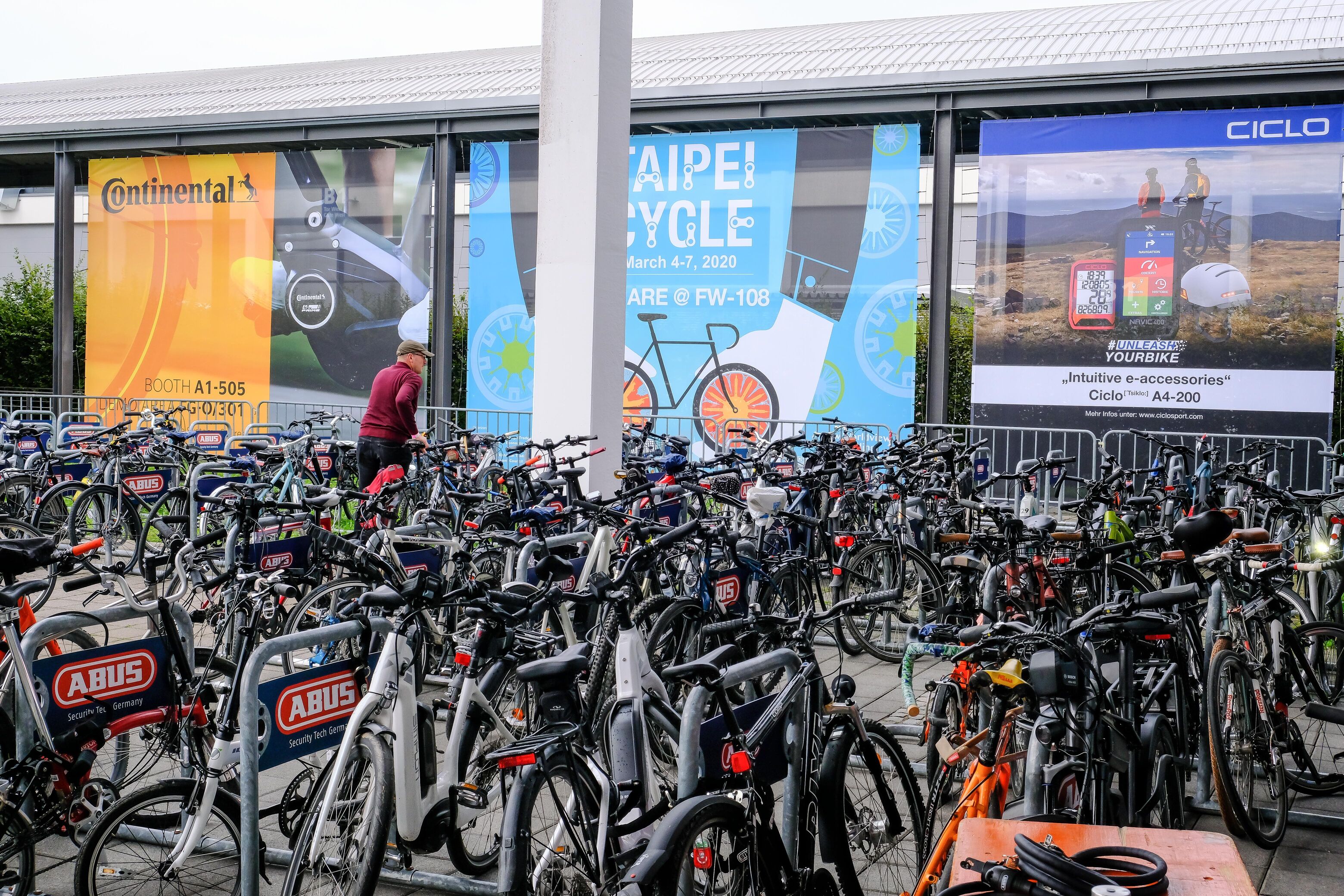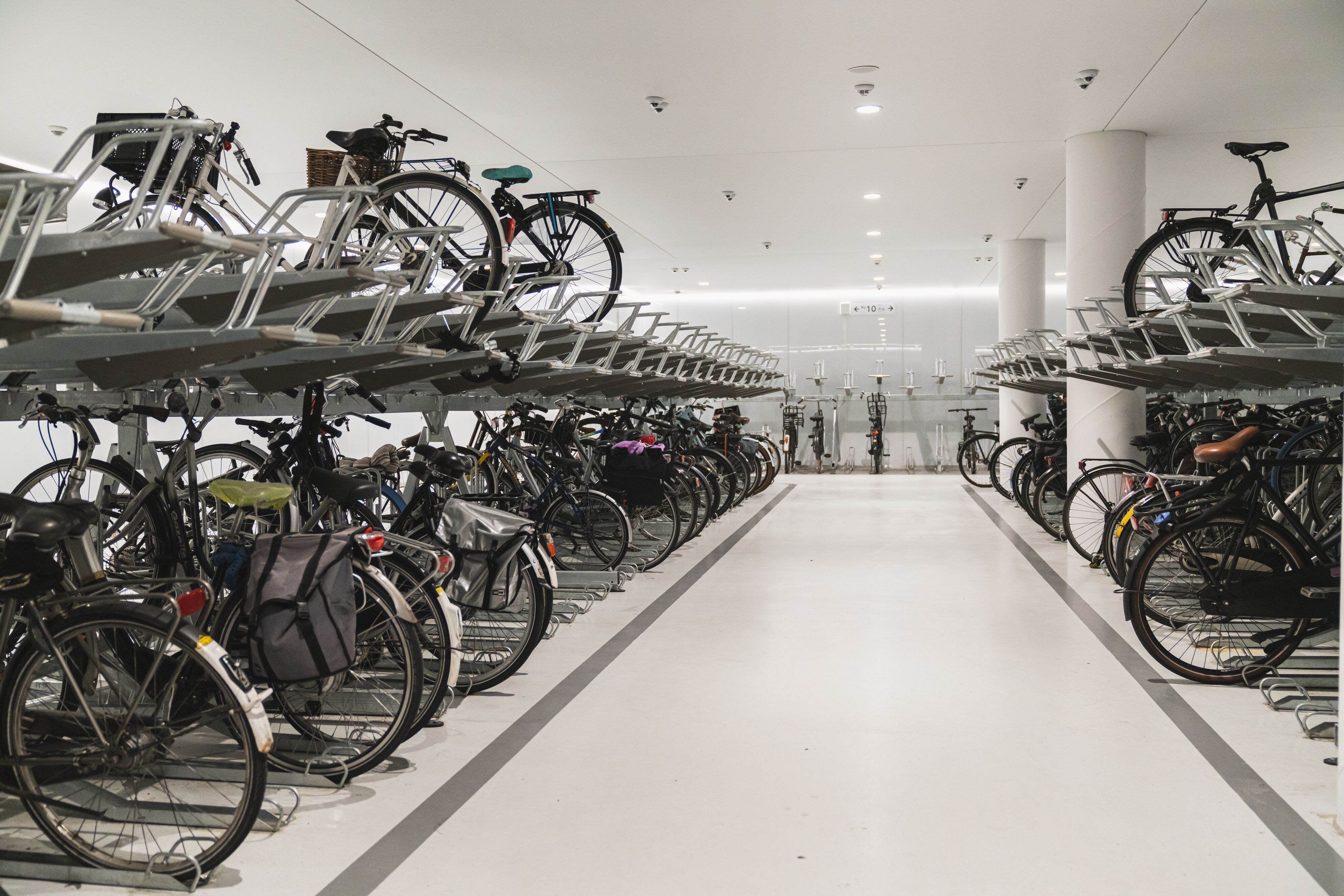The accident rate drops, the quality of life increases, people live healthier lives, and the urban environment becomes more attractive. At the same time, numerous examples show that local trade does not suffer when people ride their bikes in front of stores. In New York on Pearl Street, 50 percent more retail sales were measured after traffic was calmed. What is preventing Germany from transforming itself more quickly? Dr. Stefan Carsten wonders about the inertia between Lake Constance and Sylt.
Mr. Carsten, from a geographer's perspective, how far have we come in terms of the mobility revolution?
At the very beginning, you could probably say we haven't even started yet. You can see that from the subsidies and the pots that are being made available by the Federal Ministry of Transport. Ridiculously astronomical sums are being poured into the car system, which is damaging us in every respect, damaging the economy, damaging society, damaging the future. And homeopathic funds are invested in bicycles and other areas. And that, of course, has to change as quickly as possible if we really want to think seriously about the transport and mobility revolution.
The political decision-makers need six months to convert the public transportation system to a 49-euro offer. You can see that here, too, the idea of access to public transportation has not yet taken hold at all. A gas station changes its prices seven or eight times a day, and public transportation needs half a year to convert a ticket to 49 euros because we still think in terms of ticket vending machines.

Does the issue have to work with regulation and government alimentation, or does it also get enough driving force from below?
Unfortunately, no. The majority of the German population is not prepared to actually give up their cars for environmental reasons. You can see that Germany has major deficits in the area of electromobility.
But you can also see that when cyclists are given space, or when people are given space by rededicating road space, by suddenly eliminating the marginal parking spaces and having a three-meter-wide bike lane, that people are willing to try out the system and ride their bikes. Like during Corona. And that that's still used today.
I live in Berlin-Mitte. It's incredible to see how many cyclists are on the road here right now, ever since we started having spring. That means there are more and more every year if you give them space, but not by just talking about it.
That means it needs change, it needs the right framework. That can be regulation on the one hand, but it can also be offering an attractive public space.
At the moment, we're a bit stuck in a kind of chicken-and-egg problem. The fact that we make the space available means that there is no imagination on the part of potential switchers as to how this can work or how it can be safe. And the other way around as well, because the pressure from the market doesn't get stronger, the urban planners don't feel it so tremendously that they free up money for that.
Yes, I see it the same way. I was talking about Munich on Bavarian radio yesterday. The main train station in Munich is now being rebuilt, and they have provided no less than 3000 bicycle parking spaces there and are totally proud of it. This number is so ridiculously low, it's totally irrelevant. But these are figures calculated by planners. These are projections, these are forecasts that believe there will be a need for 3000 parking spaces at Munich Central Station. This main station will then be opened in 2030, 2031, and probably 5 minutes later the 3000 parking spaces will be reserved and fully booked, and 5000 more cyclists will be standing there wondering, where should I safely park my bike now? A bicycle, which is increasingly expensive and increasingly high quality.
These are also our procedures for planning traffic into the future. They are based on completely different contexts, namely the principle of the industrial city, where it was enough to plan and build a road, and the result was economic development and prosperity. That is the classic model. I think a lot of people still work in that model.
The new model is based on the knowledge and information society, and says: urban quality of life is the most relevant influencing factor. That means that if I create urban quality of life, a high quality of stay, a redistribution of public space, then people will use that. And I see that in bicycle bridges in Copenhagen, just as I see it in streets that are being redesignated in Germany, in Hamburg, Berlin or in Munich. Suddenly you have many, many more cyclists than the model seems to have figured out.
Until that changes in the universities where people are educated, it apparently takes much longer in Germany than in the Netherlands or Scandinavia.
We can't plan in a linear way because we are on the threshold of a break.
And this is reflected in the fact that 20 years ago we had perhaps five means of transport. My own car, my own bicycle, public transportation, I could walk. Maybe there was already stationary car sharing. There was still a cab. That was it. Today we have 30 options. In Berlin, Hamburg, Cologne, Düsseldorf. In Hanover, Augsburg or Nuremberg, we have maybe 25 options. Is that reflected anywhere in the cityscape? People are using scooters, and they are using them more and more sustainably. I'm one of those who advocates keeping it that way. Everything has changed in the area of mobility and society's sense of entitlement. Only our roads are still the same as they were 60 years ago.
"It's incredible to see how many cyclists are on the road here right now, ever since we started having spring. That means there are more and more every year if you give them space, but not by just talking about it."
Where do you personally notice this?
Everywhere. But gas stations are an exciting example. I advised Total and the day after it was officially communicated that Total's entire German service station network was being sold. Today's service station may be tomorrow's mobility hub. Or the service hub.

Are there any good examples in Germany?
I think the bike lanes are already really great. In Berlin, the first underground bicycle parking garage has just opened, in Friedrichshain. You can't imagine what suddenly happened in the bike community on LinkedIn. Wow, it looks great. It's like being in the Netherlands. Can I take a look at that. It's starting to happen.
And what's much, much more exciting is that properties are now being certified according to different standards. Whereas before a new property was certified platinum if there were lots of car parking spaces in the basement, now it's all about parking spaces for bicycles, charging stations and cargo bikes. If developers want to get money from the bank, they have to meet sustainability criteria that place different demands on mobility.
This also means that cities are changing, which is a driver for bicycles. Sustainability policies and jurisdictions are changing, which is a massive driver for cycling. Investment criteria are changing, which is also a driver for cycling. So I really only see drivers that have a positive impact on cycling.
But it's not just about the bike. It's also about other mobility approaches.
Yes, now you could bring up the Damocles sword of autonomous driving. In Germany, it's always talked away, but it's already there. It works very well. And it is much safer than humans sitting behind the wheel.
Is that good now or is that bad now? I'll say quite offensively and optimistically, we can also rethink our road space. No car runs over a child. It simply stops. Every child playing can paralyze the whole traffic.
And in the same way, a bicyclist can ride down the middle of a highway and drag a rat's tail of cars behind him. And no one can honk because there is no horn. But of course, autonomous shuttles are a big risk for public transport.
But that doesn't happen at the push of a button. We have many years of hybrids ahead of us.
Exactly, absolutely right. And I'm not talking about the next five years; it will take ten or twenty years. As I said, the first systems are already in place. In the Rhine-Main region, the first public transport Level 4 shuttles are on the road, albeit probably still with a safety driver. In San Francisco, Austin and Houston, they are already operating without a safety driver.
But I'm not talking about autonomous driving in ten years. But I am talking about the fact that in maybe 40 years we will no longer be allowed to drive as humans.
In rural areas, things move faster. Robocabs really do bring enormous advantages here.
There are currently around 90 test fleets in Germany for on-call buses. These no longer run according to a timetable, but you simply call them via an app or by phone. They will revolutionize public transportation to a very, very great extent, because suddenly there will be mobility in places where there used to be none. From a technical and regulatory point of view, that's not a problem at all.
Scooters are very controversial at the moment. Success or failure?
I think they are on their way to becoming a success. Yes, they are abused. Yes, they have high accident rates. But they've also only been around for six years. I think we need to understand, first of all, the spaces and applications, how we incorporate them, and how we regulate them. I'm already sad, I'll say frankly, that the most positive example in Europe, Paris, has now banned scooter fleets. It was the tidiest city you could imagine. Every scooter was at its grab rail. And every bike is at its grab rail, too, because they used technologies that allowed parking only at the grab rail. But there are also over 10,000 grab bars. In Germany, mayors complain without doing anything. In addition, scooters are now being used more and more sustainably, even in commuter routes. Providers are now working with sensors to find out if there are two people on it or one. They're working with apps to see if you're drunk or not. So everyone is working on different developments now. It's not hard to see a positive development there.
Bike sharing can also become a problem for the bike industry.
Yes, I think so. I have my own bike, of course. But of course I still use bike sharing because it's totally attractive. If the streetcar suddenly leaves or I'm late and I still have to get to the train, there's a bike there, of course I use it. And I don't do that so rarely.
And people will ask themselves, just like with Dance and like with Swapfiets: Do I need my own bike? And maybe I have my lover's bike for the weekend, and actually resort to such sharing bikes during the week.
Does this mean that the bike trade has to prepare itself to think more in terms of service again?
I think this is a historical break. We have now reached a higher level of sales through Corona and things are leveling off again. But you lose these people very quickly when they realize that I can't repair the bike.
ATU has entered into a cooperation with Fahrrad.de and has said, all customers of Fahrrad.de, with us you can have the bike adjusted and with us you can have the flat tire repaired and the chain. Or what if a car dealer gets in on the act?
That sounds like a plausible scenario. But is it really also plausible that e-bikes will become part of the power grid, as you suggested?
I'm always naïve, and I thought I'd just suggest that.
Look, this is a topic that is totally under-lit, even in Germany. That's why I find the topic exciting. 15 years ago, I developed three business models at Daimler and proposed them to the Board of Management. One became car2go, the other became moovel, and the third, everyone said it would never happen. Never. And that was vehicle-to-grid.
So now I've brought it out of the woodwork again this year. It has huge potential in the commercial vehicle sector. Cars sitting at rest stops all weekend, wow, what energy sources. School buses, huge potential. Private cars are also exciting, if you suddenly supply your vacation home with it or it simply serves as grid stabilization. I was just thinking this through. So bike battery. It may be a joke, but maybe there's a grain of truth in there.
What can be done to make this happen a little faster?
Show positive examples, create positive images. There's this great example here from friends in Berlin who have visualized the city highway, which is currently being extended, as a kind of climate oasis. There are high shelves here, plants can be grown there, and then solar energy can be used, and so on. Simply bringing other images into people's heads.
Unfortunately, we only ever talk about dystopias. We always talk about how bad everything is going to be. But no one talks about what the economic and social potential is and what positive new worlds could actually be if we work on change. That's what bothers me so much about all these debates.
Dr. Stefan Carsten

Dr. Stefan Carsten is a futurologist and urban geographer. He was project manager in the future and environment research department of Daimler AG in Berlin, where he designed new mobility services such as car2go and moovel. Currently, he is an advisory board member of the Federal Ministry of Transport for "Strategic Guidelines of Public Transport in Germany", the IAA Mobility in Munich and the Reality Lab Radbahn in Berlin, among others. Since 2019, he publishes the Mobility Report in cooperation with the zukunftsInstitut. He works with diverse stakeholders in the mobility sector in Germany and abroad: the bicycle industry, public transport companies, the automotive industry, and cities and municipalities. He is married, has two children and lives and works in Berlin.


